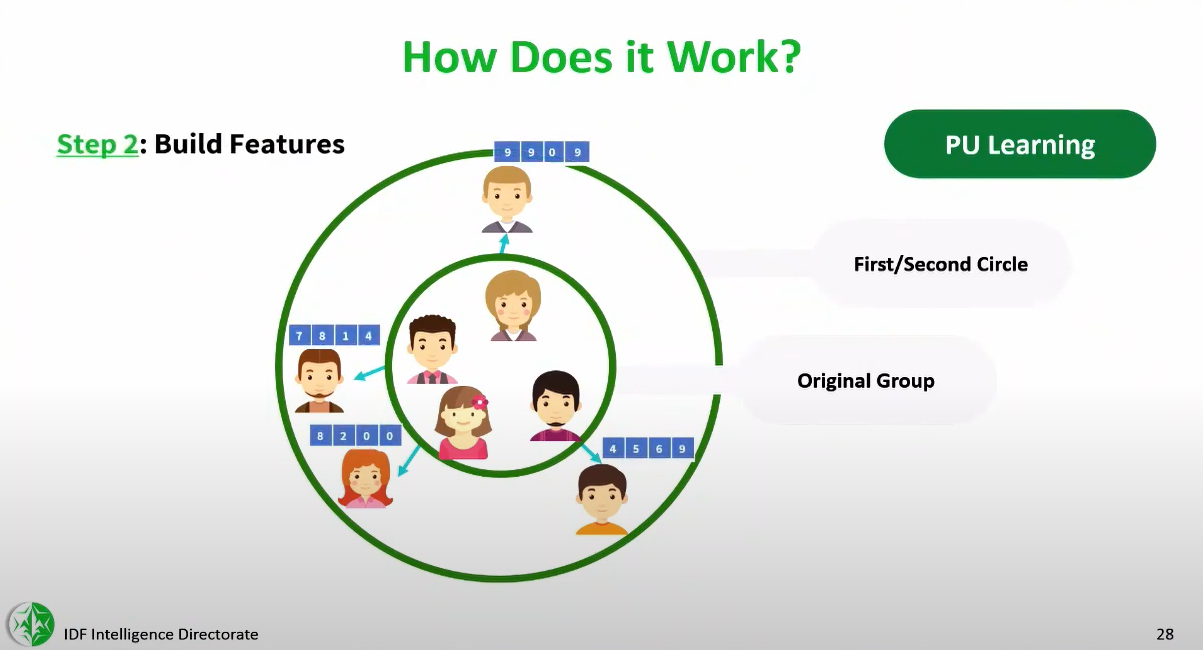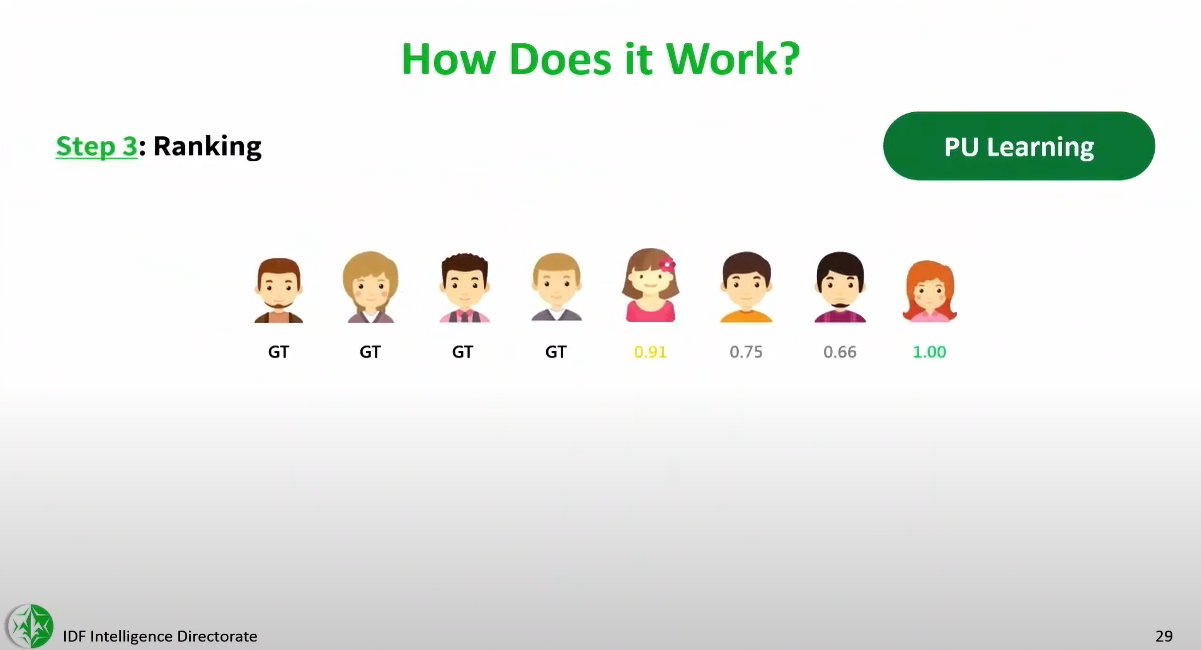The Israeli army has marked tens of thousands of Gazans as suspects for assassination, using an AI targeting system with little human oversight and a permissive policy for casualties, +972 and Local Call reveal.
In 2021, a book titled “The Human-Machine Team: How to Create Synergy Between Human and Artificial Intelligence That Will Revolutionize Our World” was released in English under the pen name “Brigadier General Y.S.” In it, the author — a man who we confirmed to be the current commander of the elite Israeli intelligence unit 8200 — makes the case for designing a special machine that could rapidly process massive amounts of data to generate thousands of potential “targets” for military strikes in the heat of a war. Such technology, he writes, would resolve what he described as a “human bottleneck for both locating the new targets and decision-making to approve the targets.”
Such a machine, it turns out, actually exists. A new investigation by +972 Magazine and Local Call reveals that the Israeli army has developed an artificial intelligence-based program known as “Lavender,” unveiled here for the first time. According to six Israeli intelligence officers, who have all served in the army during the current war on the Gaza Strip and had first-hand involvement with the use of AI to generate targets for assassination, Lavender has played a central role in the unprecedented bombing of Palestinians, especially during the early stages of the war. In fact, according to the sources, its influence on the military’s operations was such that they essentially treated the outputs of the AI machine “as if it were a human decision.”
Formally, the Lavender system is designed to mark all suspected operatives in the military wings of Hamas and Palestinian Islamic Jihad (PIJ), including low-ranking ones, as potential bombing targets. The sources told +972 and Local Call that, during the first weeks of the war, the army almost completely relied on Lavender, which clocked as many as 37,000 Palestinians as suspected militants — and their homes — for possible air strikes.
During the early stages of the war, the army gave sweeping approval for officers to adopt Lavender’s kill lists, with no requirement to thoroughly check why the machine made those choices or to examine the raw intelligence data on which they were based. One source stated that human personnel often served only as a “rubber stamp” for the machine’s decisions, adding that, normally, they would personally devote only about “20 seconds” to each target before authorizing a bombing — just to make sure the Lavender-marked target is male. This was despite knowing that the system makes what are regarded as “errors” in approximately 10 percent of cases, and is known to occasionally mark individuals who have merely a loose connection to militant groups, or no connection at all.
Moreover, the Israeli army systematically attacked the targeted individuals while they were in their homes — usually at night while their whole families were present — rather than during the course of military activity. According to the sources, this was because, from what they regarded as an intelligence standpoint, it was easier to locate the individuals in their private houses. Additional automated systems, including one called “Where’s Daddy?” also revealed here for the first time, were used specifically to track the targeted individuals and carry out bombings when they had entered their family’s residences.

The result, as the sources testified, is that thousands of Palestinians — most of them women and children or people who were not involved in the fighting — were wiped out by Israeli airstrikes, especially during the first weeks of the war, because of the AI program’s decisions.
“We were not interested in killing [Hamas] operatives only when they were in a military building or engaged in a military activity,” A., an intelligence officer, told +972 and Local Call. “On the contrary, the IDF bombed them in homes without hesitation, as a first option. It’s much easier to bomb a family’s home. The system is built to look for them in these situations.”
The Lavender machine joins another AI system, “The Gospel,” about which information was revealed in a previous investigation by +972 and Local Call in November 2023, as well as in the Israeli military’s own publications. A fundamental difference between the two systems is in the definition of the target: whereas The Gospel marks buildings and structures that the army claims militants operate from, Lavender marks people — and puts them on a kill list.
In addition, according to the sources, when it came to targeting alleged junior militants marked by Lavender, the army preferred to only use unguided missiles, commonly known as “dumb” bombs (in contrast to “smart” precision bombs), which can destroy entire buildings on top of their occupants and cause significant casualties. “You don’t want to waste expensive bombs on unimportant people — it’s very expensive for the country and there’s a shortage [of those bombs],” said C., one of the intelligence officers. Another source said that they had personally authorized the bombing of “hundreds” of private homes of alleged junior operatives marked by Lavender, with many of these attacks killing civilians and entire families as “collateral damage.”
In an unprecedented move, according to two of the sources, the army also decided during the first weeks of the war that, for every junior Hamas operative that Lavender marked, it was permissible to kill up to 15 or 20 civilians; in the past, the military did not authorize any “collateral damage” during assassinations of low-ranking militants. The sources added that, in the event that the target was a senior Hamas official with the rank of battalion or brigade commander, the army on several occasions authorized the killing of more than 100 civilians in the assassination of a single commander.

The following investigation is organized according to the six chronological stages of the Israeli army’s highly automated target production in the early weeks of the Gaza war. First, we explain the Lavender machine itself, which marked tens of thousands of Palestinians using AI. Second, we reveal the “Where’s Daddy?” system, which tracked these targets and signaled to the army when they entered their family homes. Third, we describe how “dumb” bombs were chosen to strike these homes.
Fourth, we explain how the army loosened the permitted number of civilians who could be killed during the bombing of a target. Fifth, we note how automated software inaccurately calculated the amount of non-combatants in each household. And sixth, we show how on several occasions, when a home was struck, usually at night, the individual target was sometimes not inside at all, because military officers did not verify the information in real time.
STEP 1: GENERATING TARGETS
‘Once you go automatic, target generation goes crazy’
In the Israeli army, the term “human target” referred in the past to a senior military operative who, according to the rules of the military’s International Law Department, can be killed in their private home even if there are civilians around. Intelligence sources told +972 and Local Call that during Israel’s previous wars, since this was an “especially brutal” way to kill someone — often by killing an entire family alongside the target — such human targets were marked very carefully and only senior military commanders were bombed in their homes, to maintain the principle of proportionality under international law.
But after October 7 — when Hamas-led militants launched a deadly assault on southern Israeli communities, killing around 1,200 people and abducting 240 — the army, the sources said, took a dramatically different approach. Under “Operation Iron Swords,” the army decided to designate all operatives of Hamas’ military wing as human targets, regardless of their rank or military importance. And that changed everything.
The new policy also posed a technical problem for Israeli intelligence. In previous wars, in order to authorize the assassination of a single human target, an officer had to go through a complex and lengthy “incrimination” process: cross-check evidence that the person was indeed a senior member of Hamas’ military wing, find out where he lived, his contact information, and finally know when he was home in real time. When the list of targets numbered only a few dozen senior operatives, intelligence personnel could individually handle the work involved in incriminating and locating them.

However, once the list was expanded to include tens of thousands of lower-ranking operatives, the Israeli army figured it had to rely on automated software and artificial intelligence. The result, the sources testify, was that the role of human personnel in incriminating Palestinians as military operatives was pushed aside, and AI did most of the work instead. According to four of the sources who spoke to +972 and Local Call, Lavender — which was developed to create human targets in the current war — has marked some 37,000 Palestinians as suspected “Hamas militants,” most of them junior, for assassination (the IDF Spokesperson denied the existence of such a kill list in a statement to +972 and Local Call).
“We didn’t know who the junior operatives were, because Israel didn’t track them routinely [before the war],” explained senior officer B. to +972 and Local Call, illuminating the reason behind the development of this particular target machine for the current war. “They wanted to allow us to attack [the junior operatives] automatically. That’s the Holy Grail. Once you go automatic, target generation goes crazy.”
The sources said that the approval to automatically adopt Lavender’s kill lists, which had previously been used only as an auxiliary tool, was granted about two weeks into the war, after intelligence personnel “manually” checked the accuracy of a random sample of several hundred targets selected by the AI system. When that sample found that Lavender’s results had reached 90 percent accuracy in identifying an individual’s affiliation with Hamas, the army authorized the sweeping use of the system. From that moment, sources said that if Lavender decided an individual was a militant in Hamas, they were essentially asked to treat that as an order, with no requirement to independently check why the machine made that choice or to examine the raw intelligence data on which it is based.
“At 5 a.m., [the air force] would come and bomb all the houses that we had marked,” B. said. “We took out thousands of people. We didn’t go through them one by one — we put everything into automated systems, and as soon as one of [the marked individuals] was at home, he immediately became a target. We bombed him and his house.”
“It was very surprising for me that we were asked to bomb a house to kill a ground soldier, whose importance in the fighting was so low,” said one source about the use of AI to mark alleged low-ranking militants. “I nicknamed those targets ‘garbage targets.’ Still, I found them more ethical than the targets that we bombed just for ‘deterrence’ — highrises that are evacuated and toppled just to cause destruction.”
The deadly results of this loosening of restrictions in the early stage of the war were staggering. According to data from the Palestinian Health Ministry in Gaza, on which the Israeli army has relied almost exclusively since the beginning of the war, Israel killed some 15,000 Palestinians — almost half of the death toll so far — in the first six weeks of the war, up until a week-long ceasefire was agreed on Nov. 24.

‘The more information and variety, the better’
The Lavender software analyzes information collected on most of the 2.3 million residents of the Gaza Strip through a system of mass surveillance, then assesses and ranks the likelihood that each particular person is active in the military wing of Hamas or PIJ. According to sources, the machine gives almost every single person in Gaza a rating from 1 to 100, expressing how likely it is that they are a militant.
Lavender learns to identify characteristics of known Hamas and PIJ operatives, whose information was fed to the machine as training data, and then to locate these same characteristics — also called “features” — among the general population, the sources explained. An individual found to have several different incriminating features will reach a high rating, and thus automatically becomes a potential target for assassination.
In “The Human-Machine Team,” the book referenced at the beginning of this article, the current commander of Unit 8200 advocates for such a system without referencing Lavender by name. (The commander himself also isn’t named, but five sources in 8200 confirmed that the commander is the author, as reported also by Haaretz.) Describing human personnel as a “bottleneck” that limits the army’s capacity during a military operation, the commander laments: “We [humans] cannot process so much information. It doesn’t matter how many people you have tasked to produce targets during the war — you still cannot produce enough targets per day.”
The solution to this problem, he says, is artificial intelligence. The book offers a short guide to building a “target machine,” similar in description to Lavender, based on AI and machine-learning algorithms. Included in this guide are several examples of the “hundreds and thousands” of features that can increase an individual’s rating, such as being in a Whatsapp group with a known militant, changing cell phone every few months, and changing addresses frequently.
“The more information, and the more variety, the better,” the commander writes. “Visual information, cellular information, social media connections, battlefield information, phone contacts, photos.” While humans select these features at first, the commander continues, over time the machine will come to identify features on its own. This, he says, can enable militaries to create “tens of thousands of targets,” while the actual decision as to whether or not to attack them will remain a human one.
The book isn’t the only time a senior Israeli commander hinted at the existence of human target machines like Lavender. +972 and Local Call have obtained footage of a private lecture given by the commander of Unit 8200’s secretive Data Science and AI center, “Col. Yoav,” at Tel Aviv University’s AI week in 2023, which was reported on at the time in the Israeli media.
In the lecture, the commander speaks about a new, sophisticated target machine used by the Israeli army that detects “dangerous people” based on their likeness to existing lists of known militants on which it was trained. “Using the system, we managed to identify Hamas missile squad commanders,” “Col. Yoav” said in the lecture, referring to Israel’s May 2021 military operation in Gaza, when the machine was used for the first time.


The lecture presentation slides, also obtained by +972 and Local Call, contain illustrations of how the machine works: it is fed data about existing Hamas operatives, it learns to notice their features, and then it rates other Palestinians based on how similar they are to the militants.
“We rank the results and determine the threshold [at which to attack a target],” “Col. Yoav” said in the lecture, emphasizing that “eventually, people of flesh and blood take the decisions. In the defense realm, ethically speaking, we put a lot of emphasis on this. These tools are meant to help [intelligence officers] break their barriers.”
In practice, however, sources who
have used Lavender in recent months say human agency and precision were
substituted by mass target creation and lethality ............................... continue



No comments:
Post a Comment